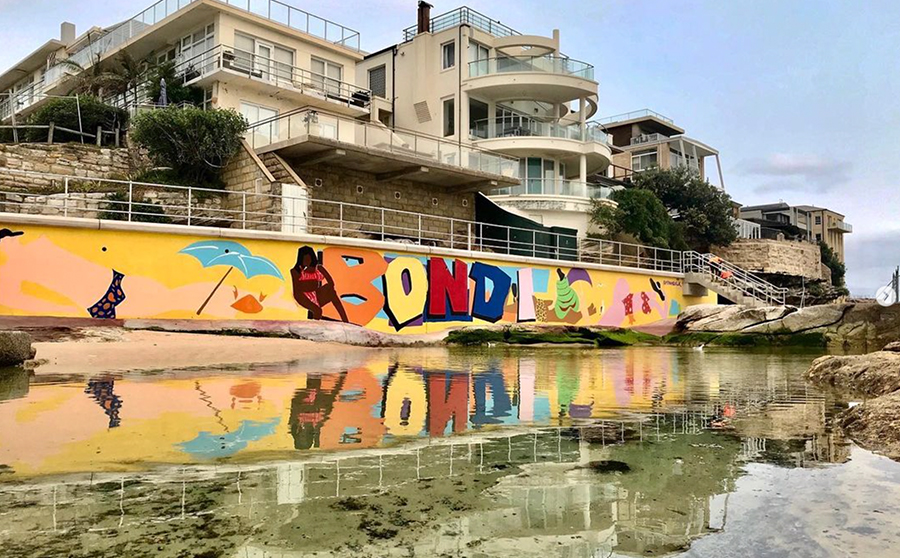- Home Home
-
Residents
Residents
- Waste & recycling Bins, clean-ups and disposing of tricky household items
- Parking Permits, car parks, maps and safety
- Your trees, plants & garden Tree pruning, native gardens and Living Connections
- Neighbourhood issues Report and resolve common issues
- Pets Dog and cat ownership, lost animals and off-leash parks
- Precinct committees Your local connection to Council
- Waverley LGA Maps Maps of the environment, planning zones and more
- Payments Pay for rates, certificates, permits and licences
-
Community
Community
- Children, youth & family services Early education, day care, support & resources
- Awards & grants Local Hero Awards, Garden Awards, Small Grants
- Get involved in your community Volunteering, creating connections, gardening
- Over 60s Services, activities, Mill Hill 60+ program
- Housing & homelessness Affordable housing, programs & support services
- Cultural diversity & inclusion Multiculturalism, language help, citizenship
- Aboriginal & Torres Strait Islander people Commitment to Reconciliation, plans & policies
- Disability inclusion Support services, access & inclusion projects
-
Business
Business
- Resources for Business Events, grants and support
- Innovation Roadmap 2025 to support business
- Tourism Home to Australia's most famous beach.
- Sponsorship Support local events
- Procurement Submitting tenders & expressions of interest to Council
- Commercial waste & recycling services Tailored waste services for business
- Mobile vending Waverley has limited mobile vending licenses
- Hello Bondi Council’s website to help visitors enjoy their stay
-
Recreation
Recreation
- Events Browse performances, exhibits and experiences
- Places of interest Historic buildings, markets, dining and Bondi Pavilion
- School Holiday Programs Fun-filled activities, workshops and events.
- Beaches & coast Beach information, safety, pool cleaning schedules
- Parks & reserves Location, public facilities and accessibility
- Arts & culture Artistic vision, creative programs, spaces and awards
- Venue & sport facilities hire Book indoor venues and sport facilities in Waverley
- Use of public spaces Events, commercial activations, filming etc
-
Environment
Environment
- Council leadership on environmental action Research, strategies and Council programs
- Climate resilience and reducing emissions Switch to electric, go solar and grants for apartments
- Water and the coast Keep beaches clean, save water and enjoy the sea
- Towards zero waste Reduce waste at home and at work
- Public tree management & urban greening Street Tree Masterplan and planting zones
- Native vegetation and animal habitat Join Bushcare and enjoy Waverley’s natural spaces
- Transport Council policy, bike and car share, electric vehicles
- Second Nature Council’s environmental news and events hub
-
Planning & Development
Planning & Development
- Development Applications The DA process, key documents & community consultation
- DA Tracking Tool Search a Development Application by number or date
- Application forms & certificates incl Planning, Rating, Construction and Occupation
- Waverley Local Planning Panel (WLPP) DA determination panel
- Compliance and regulations incl fire safety, food, pools and pollution
- Heritage incl Heritage Conservation Areas and fact sheets
- Urban planning and design Making Waverley a great place to live and work
- Major projects Council-delivered buildings, streets and parks
-
Council
Council
- Organisation structure Four directorates serve the community
- Mayor & councillors Your Mayor, Councillors, wards and contact details
- Council & committee meetings Dates, agendas and minutes of meetings of Council
- Advisory committees Advisory Committees of Council
- Policies, plans, strategies and reports Council's vision and delivery
- Jobs Current vacancies and working at Waverley
- Access to information Gaining access to publicly available information
- Payments Pay for rates, certificates, permits and licences
- Home
- >
- Recreation
- >
- Arts & culture
- >
- Visual arts
- >
- Public art
- Events
- Places of interest
- School Holiday Programs
- Beaches & coast
-
Parks & reserves
- Find a park
- Memorials in Waverley
- Barracluff Park
- Ben Buckler Point Reserves
- Biddigal Reserve
- Bondi Park
- Bondi Skate Park
- Bronte Park
- Caffyn Park
- Clementson Park
- Diamond Bay Reserve
- Dickson St Reserve
- Dudley Page Reserve
- Eastern Reserve
- Eora Reserve
- Hugh Bamford Reserve
- Hunter Park
- Kimberley Reserve
- Marks Park
- Queens Park
- Rodney Reserve
- Tamarama Park
- Thomas Hogan Reserve
- Varna Park
- Waverley Park
- Arts & culture
- Venue & sport facilities hire
- Use of public spaces
Public art

Public art enlivens our streets, parks and public places, forming an important part of Waverley's character. Waverley Council, private developers and business operators all play a role in the commissioning of public artworks, meaning Council funds artwork directly and in some cases requires public artwork to be part of Development Applications.
Council’s approach to public art is governed by the Waverley Public Art Masterplan and Public Art Policy.
Waverley Council has more than a dozen key sites for public art, with the commissioning of art guided by four key objectives:
- Place making i.e. making spaces into places.
- Artistic merit and integrated design, meaning the artwork itself is exceptional but also fits within context of the space.
- Sustainability and materiality in terms of longevity, engineering and environmental considerations.
- Local culture and heritage, preferencing local stories and perspectives.
All public art undergoes public consultation, typically via Council’s Have Your Say website.
View our public artwork on the Public Arts Walk that takes you around Bondi Beach to key local sites.
For further information, please contact Waverley Council’s Visual Arts Team at visualarts@waverley.nsw.gov.au.
Stay in the loop
Find out about opportunities and events by subscribing to Council’s newsletters.
